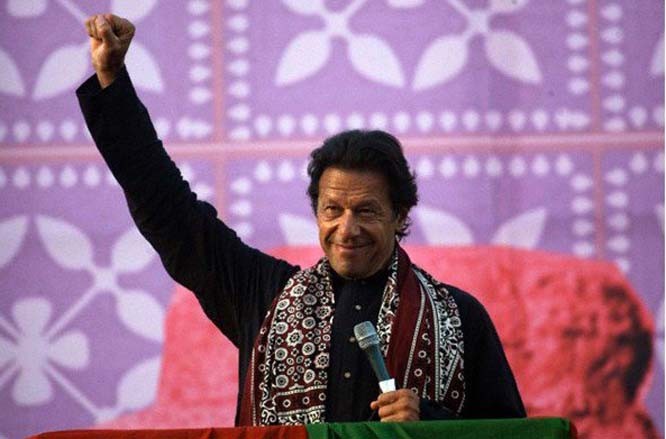
PTI’s success in Karachi and interior Sindh gives out ominous signals to PPP

Pakistan Tehreek-e-Insaf (PTI) has emerged as the second largest party in Sindh, winning 15 national and 23 provincial assembly seats. The party’s vote bank in the province has increased to 1.42 million from 650,000 in 2013.
There are 61 national and 130 provincial seats in Sindh. The PTI allocated 46 tickets on national and 97 on provincial seats.
It has won 12 out of 21 National Assembly seats from Karachi and has emerged as a possible threat to Pakistan People’s Party (PPP) in interior Sindh by winning provincial seats in Jacobabad and Ghotki. Former provincial minister for education and literacy, Jam Mehtab Hussain Dahar, lost his seat in Ghotki. Mian Muhammad Soomro, former chairman Senate of Pakistan, won National Assembly seat from Jacobabad by beating PPP leader Aijaz Hussain Jhakrani who remained a member of National Assembly from 2002 to 2018.
"Deeply impressed by the image of PTI Chairman Imran Khan and his campaign against corruption, the youth frolicked vigorously when the party won seats in interior Sindh," says Mahesh Kumar, social activist, observer and journalist. "The notion of giving a chance to a party other than the PPP and Grand Democratic Alliance (GDA) in interior Sindh has certainly made a dent in the preceding ruling party."
Along with Jacobabad and Ghotki, the PTI has also left its footprints in four districts -- Dadu, Sukkur, Thatta and Umerkot -- where its candidates performed well in provincial and national constituencies. Overall, 30 candidates secured the second largest number of votes and 18 secured third position in terms of number of votes in provincial constituencies of Sindh.
"No doubt business community along with youth in cities of interior Sindh has a tilt towards the PTI, still it does not pose any threat to the PPP in the near future," believes PPP leader Saeed Ghani.
Rural Sindh still revolves around tribal and feudal lords. Irrespective of the party, most of them are considered influential and capable of winning their constituencies.
Liaqat Ali Jatoi was contesting from Dadu, Ali Muhammad Mehar from Ghotki, and Mian Muhammad Soomro’s family members from Jacobabad. Consequently, the PTI managed to get one national and one provincial assembly seat from Jacobabad and one provincial seat in Ghotki. Jatois had much stronger position with the support of Dr Talat Mahesar, chief of Mahesar tribe who left the PPP and joined the PTI. However, this alliance was unable to secure a seat for the PTI in Dadu.
"In the past, these families had several chances of serving people but they failed. A voter does compare performance of the PPP during the last two tenures before choosing their future representatives," Saeed Ghani shares his perspective.
"Political engineering helped the PTI to gain in Jacobabad and Ghotki otherwise the PTI was not in a position to secure even a single constituency in interior Sindh," he adds.
Though the PTI allocated tickets in interior Sindh, the party was grouping with the GDA which was being considered a well-founded platform to defy the PPP.
"Unbelievably, the party which has devastated the whole province with its incompetence and corruption whitewashed the challengers who were carrying hopes of the deprived," says Ayaz Latif Palijo, leader of GDA while talking with TNS.
"PPP couldn’t capture this number of seats even after the assassination of Benazir Bhutto. It appears that back-door diplomacy in ‘power corridors’ of the country allowed the PPP unprecedented rigging," he believes.
"PTI’s strategy to support the GDA, and not going to voters directly, was flawed. PTI could have done way better if leadership had focused on interior Sindh," senior journalist Farooq Soomro says. "More than 15 million new young voters are not familiar with Z.A. Bhutto or Benazir Bhutto. Most of them are enamoured by Imran Khan."
There was a rift between central and provincial leadership of the PTI. Vice Chairman PTI Shah Mehmood Qureshi criticised officials of Sindh, saying that voters of the province were ready to accept change in the province, nevertheless the provincial cadre of the PTI looked unprepared to benefit from this opportunity.
Shah Mehmood Qureshi also contested election on two National Assembly seats from Umerkot but couldn’t win any.
"Organisational structure plays vital role in winning elections, however, the PTI as a party looked disinterested in establishing party structure in interior Sindh," says political researcher Majid Nizami.
"Even though party structure was not fully organised in Karachi, it would be unfair if we try to compare it with interior Sindh because of various reasons. The fact is that PTI’s provincial leadership kept on cherishing the party’s mounting allure in the heart of Sindh but nothing was thought about for other parts of province," he adds.
"This perspective reinforces our standpoint that the PTI wasn’t confident that it could win as many seats in Karachi, that’s why the party leadership did not give time and resources in establishing an organisational structure," says Saeed Ghani.
"Two factors present an opportunity for the PTI in future: the youth and a big anti-PPP chunk of voters. Anti-PPP voter was reluctant to vote for the GDA in the current election because that platform had nothing concrete to offer," says Mahesh Kumar. "Thus, both factors are ready to adopt an alternative but unconvinced to vote for pre-tried feudal lords."